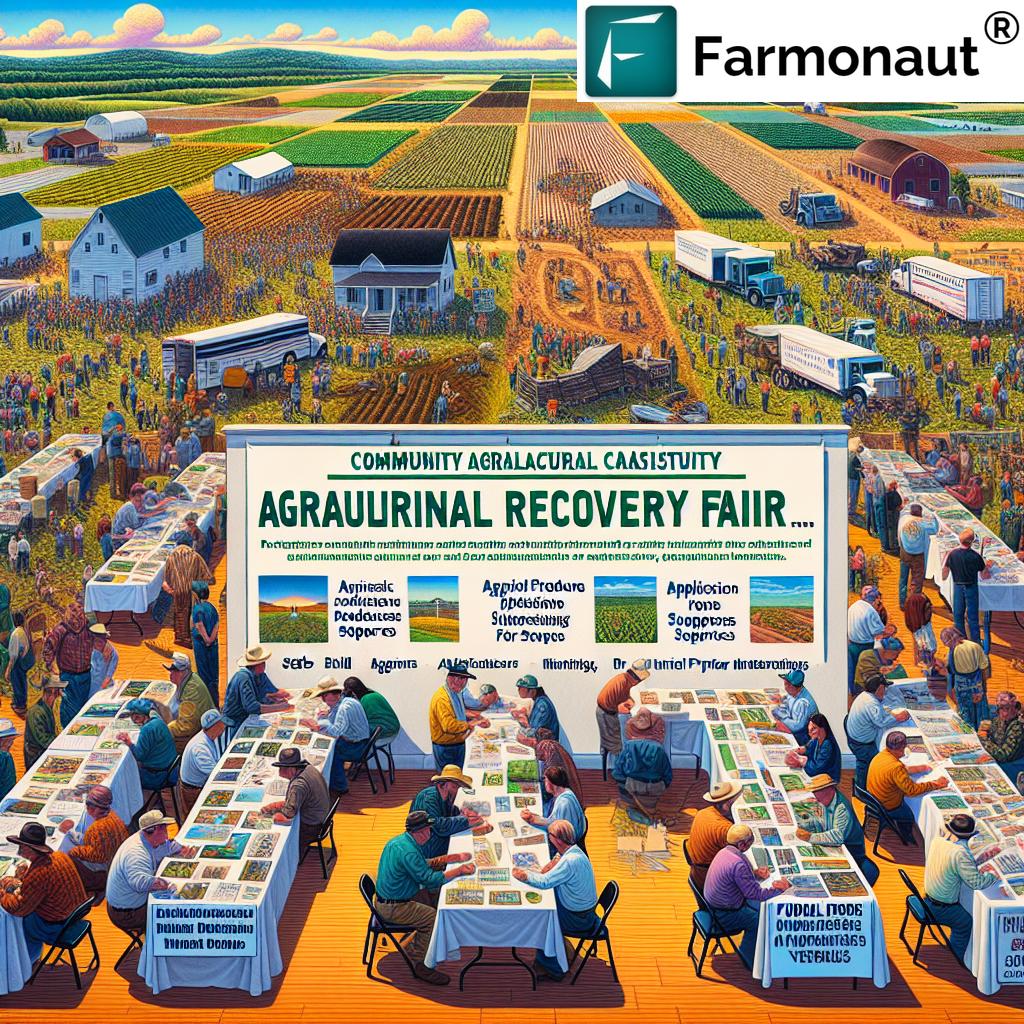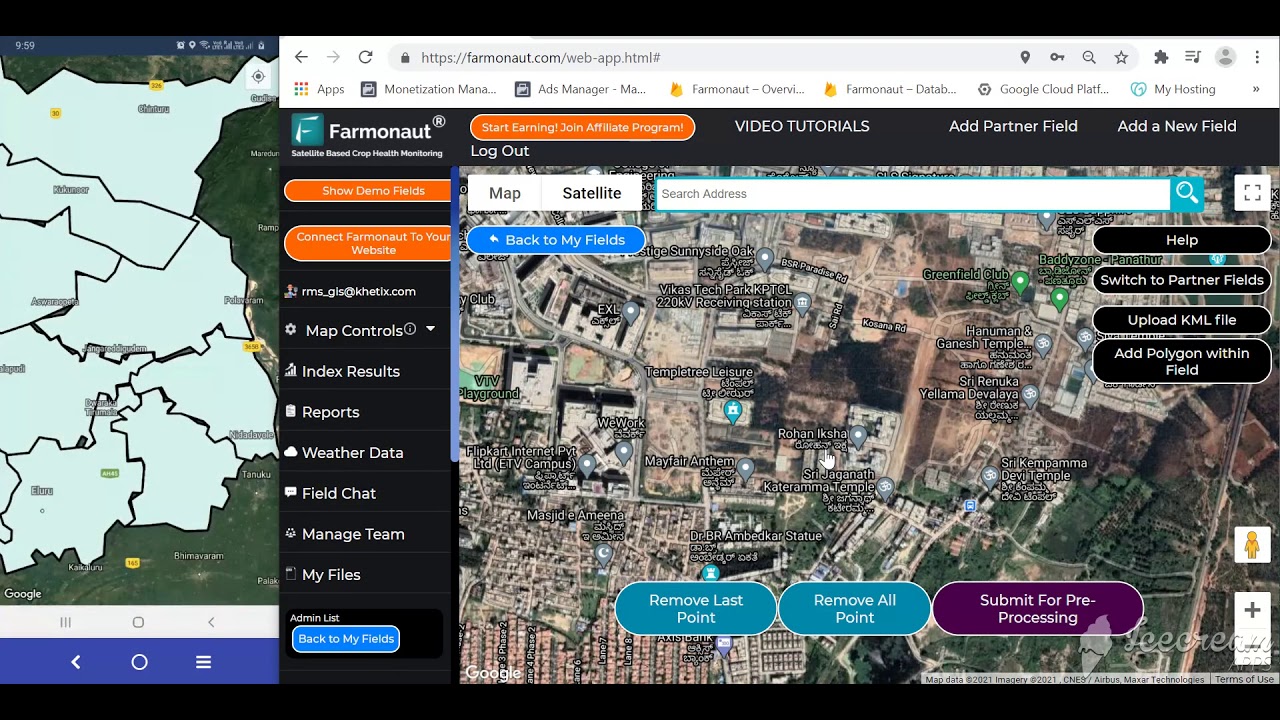FEMA Agricultural Recovery Fairs Aid North Carolina Farmers: Comprehensive Relief for Producers After Hurricane Helene
Meta Description: FEMA Agricultural Recovery Fairs aid North Carolina farmers by providing disaster relief support, resources, and tailored assistance programs in the aftermath of Hurricane Helene.
Overview and Introduction
As we reflect on the aftermath of Hurricane Helene, which devastated parts of North Carolina in September 2024, our commitment to agricultural recovery only strengthens. The storm caused unprecedented challenges for our farming communities, particularly across the western regions, leaving countless farmers, ranchers, and agricultural producers grappling with the immense task of rebuilding operations. This crisis tested the resilience of North Carolina’s agricultural sector, a pillar of the state’s economy and rural livelihood.
Realizing the urgent need for comprehensive assistance, federal and state agencies organized the FEMA Agricultural Recovery Fairs—a support lifeline for our community. These events aimed to bridge the gaps not covered by traditional disaster relief, providing targeted resources and expert guidance to those most affected by the hurricane’s destruction.
Our goal in this in-depth guide is to outline how these fairs function, dissect the agricultural disaster relief programs available to North Carolina producers, shine a spotlight on the local and federal agencies involved, and provide actionable information on ongoing support and how to apply for farm disaster assistance. We’ll also explore the pivotal role of technology in modern disaster recovery while advocating for the mental and economic well-being of our rural community.
The Need for Agricultural Recovery Fairs in North Carolina
The havoc wrought by Hurricane Helene was particularly severe in the western regions of North Carolina. Extensive flooding, infrastructure damage, and catastrophic losses of crops and livestock disrupted the backbone of the state’s agricultural operations. For many in our community, the road ahead seemed daunting.
While the state and federal government historically provide emergency assistance for agricultural producers, these broad-spectrum programs often fail to address the unique needs and challenges of agricultural producers. From complex documentation requirements to limited information about lesser-known programs, farmers can easily feel overwhelmed or left out.
Why specialized recovery fairs? The aim was to:
- Centralize access to resources for affected farmers NC
- Connect individuals directly with representatives from supporting agencies
- Provide hands-on help with application procedures and required documentation
- Offer emotional and mental health support for farmers nc
- Tailor assistance and relief to agricultural operations
By organizing these events, the community reaffirmed its commitment to leaving no one behind in the quest for resilience and sustainable rebuilding.
Structure, Purpose, and Format of the Disaster Recovery Fairs North Carolina
The FEMA Agricultural Recovery Fairs were meticulously designed as one-day events in strategic counties across the hardest-hit regions. Each fair operated as a centralized hub not only for information and documentation support, but also for building supportive networks within the agricultural community.
Who Benefited?
We ensured that the following stakeholders could directly access support:
- Farmers & ranchers
- Nursery owners
- Vineyard operators
- Honeybee growers
- Fish producers
Core Objectives & Offerings
- Information Dissemination: Clear explanations of all available relief programs, including those often missed in standard state or federal offerings.
- Documentation & Application Support: Step-by-step help for gathering, preparing, and submitting applications for emergency aid, insurance, and technical support.
- Direct Access to Experts: On-site representatives from FEMA, USDA, North Carolina Department of Agriculture, Farm Service Agency, and other agencies.
- Resource Distribution: Brochures, contact cards, digital links, and references to continuing services and how to apply for ongoing support.
- Networking and Peer Support: Fostering collaboration among attendees to strengthen community ties and share recovery strategies.
This coordinated approach greatly streamlined our recovery and resilience-building efforts, illustrating the power of community-focused disaster recovery fairs North Carolina.
Locations, Schedule & Key Agencies Involved
For maximum impact, the fairs were launched in areas most impacted by the storm. Each location was chosen for its accessibility, local farming density, and infrastructure to support large-scale events. Below is the initial schedule, which expanded as needs were further assessed:
- January 27, 2025 – McDowell County: McDowell Technical Community College, Universal Manufacturing Center, 634 College Drive, Marion, NC 28752
- January 28, 2025 – Henderson County: Dana Community Center, 2879 Upward Road, Flat Rock, NC 28731
- January 30, 2025 – Buncombe County: Asheville–Buncombe Technical Community College, Ivy Building, 9 Genevieve Circle, Asheville, NC 28801
- January 31, 2025 – Watauga County: Watauga Agricultural Conference Center, 252 Poplar Grove Road, Boone, NC 28607
Additional fairs were announced for Ashe, Avery, Burke, Mitchell, and Yancey counties. These events embodied a proactive ethos, ensuring all affected producers—regardless of their geographic location—could easily access vital support.
Key Participating Agencies:
- FEMA (Federal Emergency Management Agency): policy briefings, general disaster recovery aid, and technical assistance
- USDA (U.S. Department of Agriculture): in-depth agriculture program information, financial relief options
- NC Department of Agriculture and Consumer Services: coordinating local and state programs, distributing educational materials
- Farm Service Agency: field-level application help for producers
- Small Business Administration: explaining low-interest loan opportunities for farm operations
Key Components: Agricultural Disaster Relief Programs & Support for Rural Producers North Carolina
To maximize the reach and impact of agricultural disaster relief programs, each fair focused on the following vital elements, ensuring no producers were left uninformed or unsupported.
Program Information & Education
Every session kicked off with concise yet comprehensive presentations on federal, state, and local agriculture aid programs including:
- Emergency Conservation Program (ECP): Funding for recovering from damage to farmland and conservation structures.
- Livestock Indemnity Program (LIP): Compensation for livestock deaths caused by natural disasters.
- Tree Assistance Program (TAP): Support for orchardists and nursery growers facing tree losses.
- Additional Federal Agriculture Aid Programs: Supplemental disaster coverage, ongoing technical assistance, and business continuity resources.
Documentation & Application Guidance
Collecting, organizing, and submitting the correct documentation is critical to expediting application processes. At each center, trained staff provided hands-on assistance with:
- Evidence of property or equipment ownership
- Photographic proof of storm or flooding damage
- Insurance documentation
- Legal forms and program-specific paperwork
This level of direct, targeted help made a significant difference for attendees, especially for time-sensitive emergency assistance programs.
Networking & Collaborative Support
Beyond transactional support, the fairs prioritized fostering long-term relationships between producers, agencies, and resource providers. Our attendees benefitted from:
- Peer-to-peer knowledge exchange
- Links to ongoing technical and financial services
- Follow-up resources and personalized support pipelines
Distribution of Educational and Resource Materials
Attendees received a wealth of brochures, program packets, business cards, and digital guides to keep them informed about future events and ongoing support opportunities.
For precision farming and real-time crop health monitoring, North Carolina farmers can utilize Farmonaut’s Web and Mobile Apps—offering satellite-based analytics and AI-driven advisory support for efficient resource management, including after severe weather events.
Need scalable, enterprise-focused tools? Learn more about Farmonaut’s Large Scale Farm Management solutions for government bodies and agribusinesses seeking centralized, remote monitoring features in storm recovery contexts.
For verifying crop insurance or loan claims quickly after a disaster, see Farmonaut’s Crop Loan and Insurance Service, leveraging satellite data to simplify and expedite your disaster-related applications.
Relief Program Comparison Table: Agricultural Disaster Relief Programs for North Carolina Producers
The table below provides an essential at-a-glance reference of key federal and state recovery programs available to the North Carolina agricultural community in the aftermath of natural disasters. Use this for comparing your eligibility and understanding potential support.
Impact and Outcomes for the North Carolina Agricultural Sector
The impact of the recovery fairs reached far beyond simple transaction of aid. By simplifying access to resources, demystifying complex paperwork, and providing personalized assistance, these events played a pivotal role in getting hundreds of North Carolina producers back on their feet.
- Centralized resource hubs fostered greater uptake of rarely-accessed aid programs
- Timely application processing prevented many farmers from missing critical deadlines
- Networking between agencies and farmers led to ongoing information sharing and peer advocacy
- Mental health support teams reduced stigma and improved emotional resilience across the community
- Follow-up services ensured ongoing technical and logistical support
FEMA’s allocation of over $20 million in recovery assistance in a single year underscores the scale and urgency of the support delivered via these fairs.
Ongoing Support, Resources, and How to Apply for Farm Disaster Assistance
The recovery journey does not end with the recovery fairs. A network of ongoing support programs, both federal and state, remains at the disposal of North Carolina’s agricultural community.
USDA Programs & Long-Term Recovery Resources
The USDA Hurricane Recovery Assistance for Farmers portal details continuing agricultural disaster relief programs, such as:
- Farm Service Agency’s ongoing disaster assistance lines
- NRCS (Natural Resources Conservation Service) quick recovery grants
- Recovery-oriented crop insurance updates
- Educational outreach for next season’s disaster resilience
North Carolina State Initiatives
The NC Disaster Extension Service resource hub is a one-stop shop for:
- Emergency financial aid for recovery and future risk reduction
- Soil and water restoration advice, including technical workshops
- Guidance on business continuity planning for farm operations
Mental Health Support for Farmers NC
We recognize the emotional toll that storms and uncertainty take on our community. That’s why post-fair follow-ups include referrals to Licensed mental health counseling, group support sessions, and stress management workshops tailored to farmers, their families, and employees. This crucial layer of support is proven to enhance emotional well-being and boost long-term recovery capacity.
Additional Resources for North Carolina Producers
-
How to apply for farm disaster assistance?
Begin with your county’s Farm Service Agency office or via the online FEMA assistance portal. Collect all damage documentation, insurance records, property deeds, and photographic evidence before visiting a center for expedited help. For digital records or verification, use satellite-based tools that streamline application substantiation. -
Where to find updates on upcoming recovery fairs?
Check https://www.fema.gov/press-release/20250131/fema-schedules-additional-agriculture-recovery-centers -
How can advanced technology services like Farmonaut’s resource management and blockchain-based traceability strengthen disaster resilience?
By enabling transparent, data-driven insights and supply chain verification, these tools improve access to external aid, facilitate rapid post-disaster reporting, and enhance food supply confidence for the entire region.
Farmonaut: Empowering Agricultural Recovery with Innovative Technology
While government relief programs are indispensable, digital agricultural platforms like Farmonaut are redefining what’s possible for modern disaster preparation and recovery. We believe that affordable access to cutting-edge, satellite-based decision tools can be a game-changer for North Carolina producers facing the aftermath of severe storms.
-
Satellite-Based Crop Health Monitoring:
Our platform uses multispectral satellite imagery to monitor crop health, detect flooding, and guide recovery irrigation—all remotely. This accelerates decision-making for both individual growers and agencies managing large-scale response strategies. -
AI-Driven Advisory Systems:
Jeevn AI delivers personalized, real-time recommendations on resource allocation, pest management, and yield recovery, offering crucial support in uncertain post-hurricane conditions. -
Blockchain-Based Product Traceability:
For supply chain security and compliance—a necessity when filing aid claims or maintaining market access—explore Farmonaut’s traceability system. -
Resource and Fleet Management:
Use our fleet and resource management solutions to protect, track, and optimize farm machinery and logistics, minimizing operational downtime after disasters. -
Carbon Footprinting and Sustainability:
Rebuild environmentally smarter! Farmonaut’s real-time carbon tracking tools help manage recovery emissions, let you future-proof your operation, and support compliance with evolving state and federal environmental mandates.
Whether you’re an independent farmer, community cooperative, government official, or agribusiness, Farmonaut provides cost-effective, scalable tools designed to strengthen your preparedness—and resilience—before, during, and after natural disasters. For more details and free trials, start with our app platform today.
Frequently Asked Questions About Agricultural Recovery Fairs & Resources for Affected Farmers NC
1. Who should attend an Agricultural Recovery Fair in North Carolina?
Any farmer, rancher, nursery owner, honeybee grower, vineyard operator, or fish producer affected by recent storms and disasters is encouraged to attend. These fairs are designed for direct support and quick access to resources.
2. Which documents should I bring to the fair?
Bring proof of farm ownership, insurance papers, photographs of damage, personal ID, business/incorporation documents, and crop/livestock inventory records to streamline eligibility verification and application.
3. Can I get help with the actual application paperwork at the fairs?
Yes! On-site teams of agency representatives and technical assistants will walk you through the forms and answer your questions. If you need digital validation, consider using Farmonaut’s web/mobile solutions for satellite evidence.
4. Are there mental health support for farmers NC during recovery?
Absolutely. Each fair includes qualified counselors and peer network leads, offering both on-site private consultations and referrals to long-term support lines dedicated to the unique pressures faced by agricultural community members.
5. How do I stay updated on upcoming events and changes in relief eligibility?
Monitor the official FEMA updates, and local NC Disaster Extension Service bulletins. Sign up for newsletters and SMS alerts at Farmonaut’s digital platform for instant notifications about relief events and technical resource guides.
6. Do these fairs only cover federal aid?
No. While FEMA and USDA play lead roles, the fairs also cover state grants, local initiatives, small business support, and innovative tech-driven services so no opportunity is overlooked.
7. Is Farmonaut a regulatory body or involved in selling farm inputs?
No. Farmonaut is not a marketplace or supplier. We provide satellite-based, AI-powered farm management tools to help producers monitor their recoveries, validate crop and resource status, and streamline application and reporting processes for financial assistance.
Conclusion: Building a Resilient Future for North Carolina Producers
The coordinated response seen through the FEMA Agricultural Recovery Fairs is a testament to what our North Carolina agricultural community can achieve when every stakeholder is empowered by information, resources, and purpose-driven advocacy. From immediate relief in the storm’s aftermath to ongoing support through digital and traditional channels, no step in the recovery process was left uncovered.
As we deepen our commitment to tailored assistance and proactive rebuilding, leveraging innovation and grounded community values is crucial. Modern digital tools, such as those provided by Farmonaut, now hold a vital place in disaster resilience—ensuring not just survival, but future prosperity for every North Carolina producer, no matter what the next season brings.
For more information or to start your digital recovery journey, explore our apps and online platforms.
For technical questions, partnership inquiries, or developer API needs, visit our API gateway or the API documentation page.
Together, we can strengthen North Carolina’s agricultural sector for every generation to come.






















